By Grace Biggs, Impact Manager
It’s a beautiful spring day, and neighbors are gathering at the Wedgewood Urban Garden, an urban oasis tucked off of Wedgewood Avenue near the Tennessee State Fairgrounds. Since The Nashville Food Project undertook management of the space in 2011, hundreds of Nashvillians have grown their own food in community at the garden.
There are many different methods utilized to establish community gardens. Here at TNFP, gardeners manage their own individual or family plots. With the support of monthly garden trainings and community work days combined with assistance from TNFP garden staff and community leaders, each gardener is well equipped and supported for a successful growing season. So far there are 25 people who have signed up for a plot at the Wedgewood Urban Garden. This includes both new and long-time Wedgewood-Houston neighbors, as well as families who came to the United States as refugees from Bhutan.
Today, I’m joining the neighborhood gardeners for their monthly garden training. As I come up the hill to the upper garden, I see a few gardeners have arrived and are already working. Some are tending to their young spring crops while others are just starting their garden journey and are preparing their beds for planting. As I walk around, I get the run-down on what people have planted: arugula, collards, radishes, carrots, bush beans, snap peas… the list goes on!
When it’s time to start the training, we head down to a shaded deck in the lower garden, surrounded by trees, perennial herbs and flowers. Lauren, TNFP’s Director of Garden Programs, uncovers a board with an outline on today’s topic: spring garden pests.
“There are some pests that will out-compete us if we don’t get ahead of the game,” Lauren begins as we settle in for the workshop. To start off, we went around the circle and shared about any past experiences we’d had with garden pests.
“I had a lot of beetles on my cucumbers last year,” said one gardener. “Never caught any in the act, just saw the evidence after.”
There were many nods of agreement as we took turns sharing our experiences. Whether it’s aphids or caterpillar worms, many gardeners can relate to pest problems.
So why not spray a chemical and be done with the problem?
The gardeners have agreed and are committed to only utilizing organic methods of gardening, which also includes pest control. Most chemical insecticides can’t target a particular kind of insect, so they kill not just the pests but their predators as well. That means, ironically, that these pests can easily return -- unless you spray again, and again.
At TNFP gardens, we’re using and encouraging an approach to natural pest control called Integrated Pest Management. Lauren broke it down for us into four steps: 1) identifying and understanding the pest, 2) prevent, 3) physical control, and 4) organic chemical control.
1) Identifying and understanding the Pest
“When you’re able to identify the pest and understand their behavior, it’s like knowing your enemy. If you know their behavior, you’re better able to stay one step ahead.”
Identifying and understanding the pests in your garden is the foundation of integrated pest management. If you’re trying to identify a pest in your garden, these questions can often help get you there…
What does it eat?
What does it look like or how does it behave?
What kind of insect is it? A beetle, bug, caterpillar or worm, or maggot?
Click through the photos below for some examples of spring pests and their behavior.
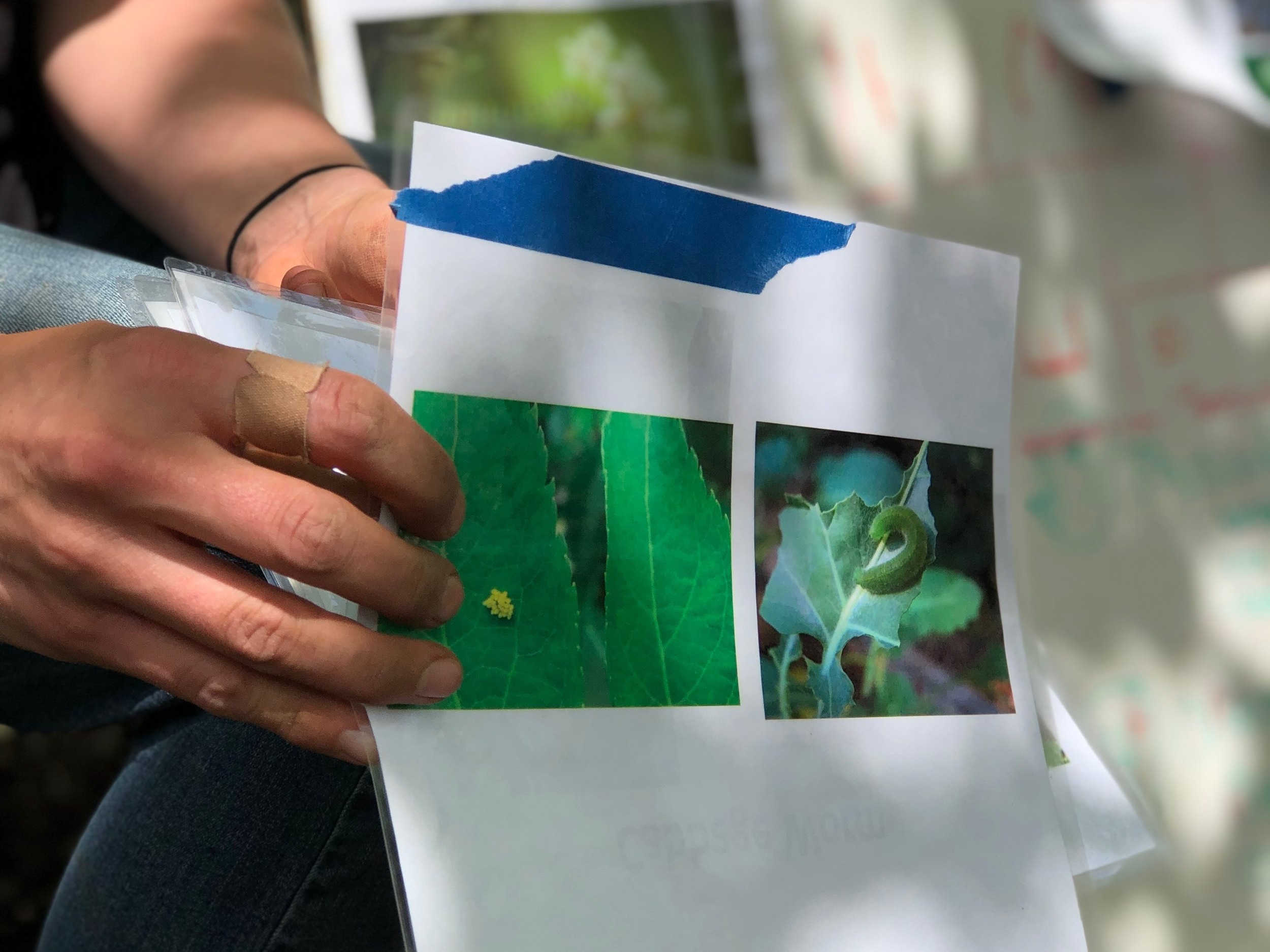

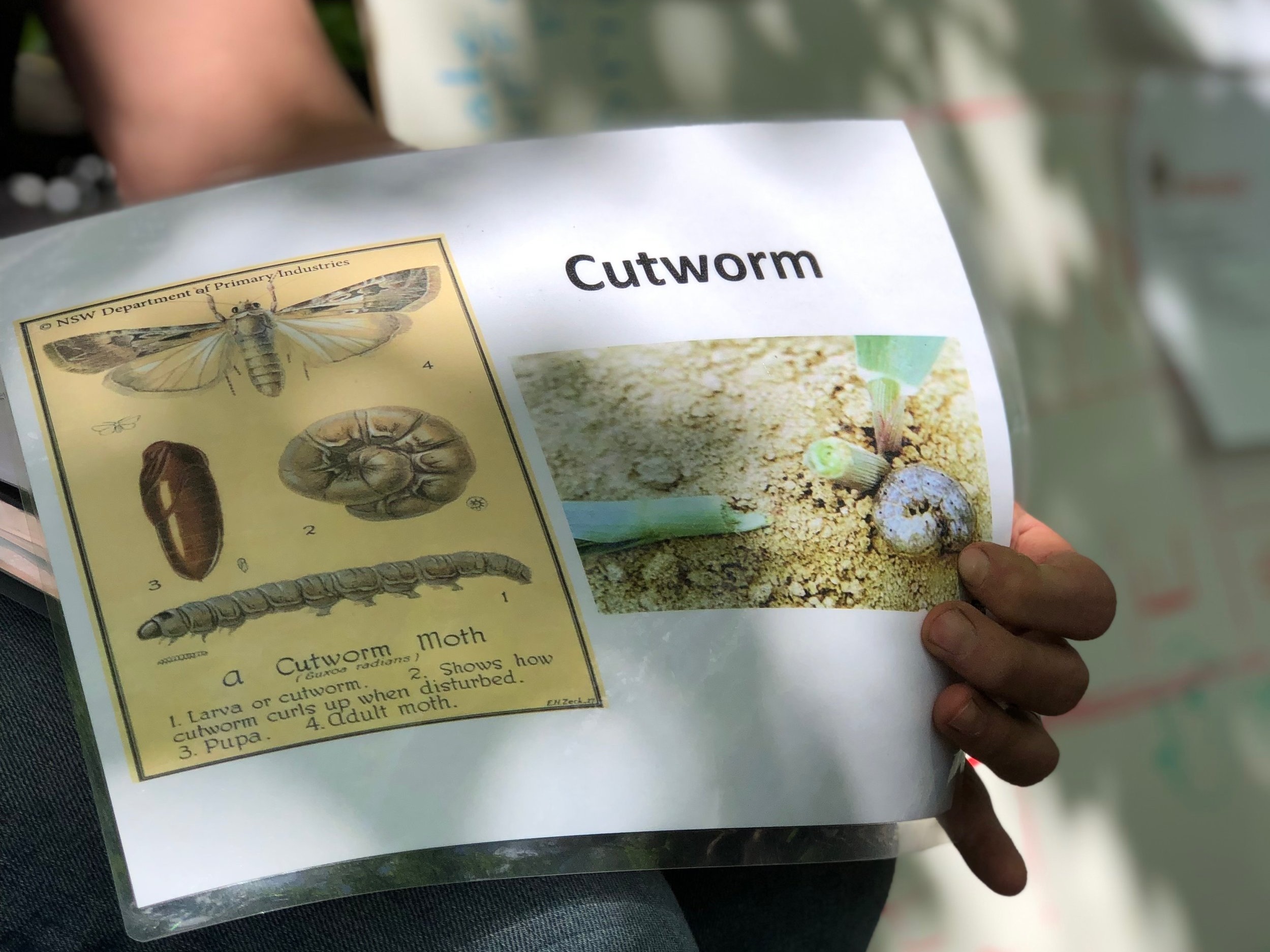
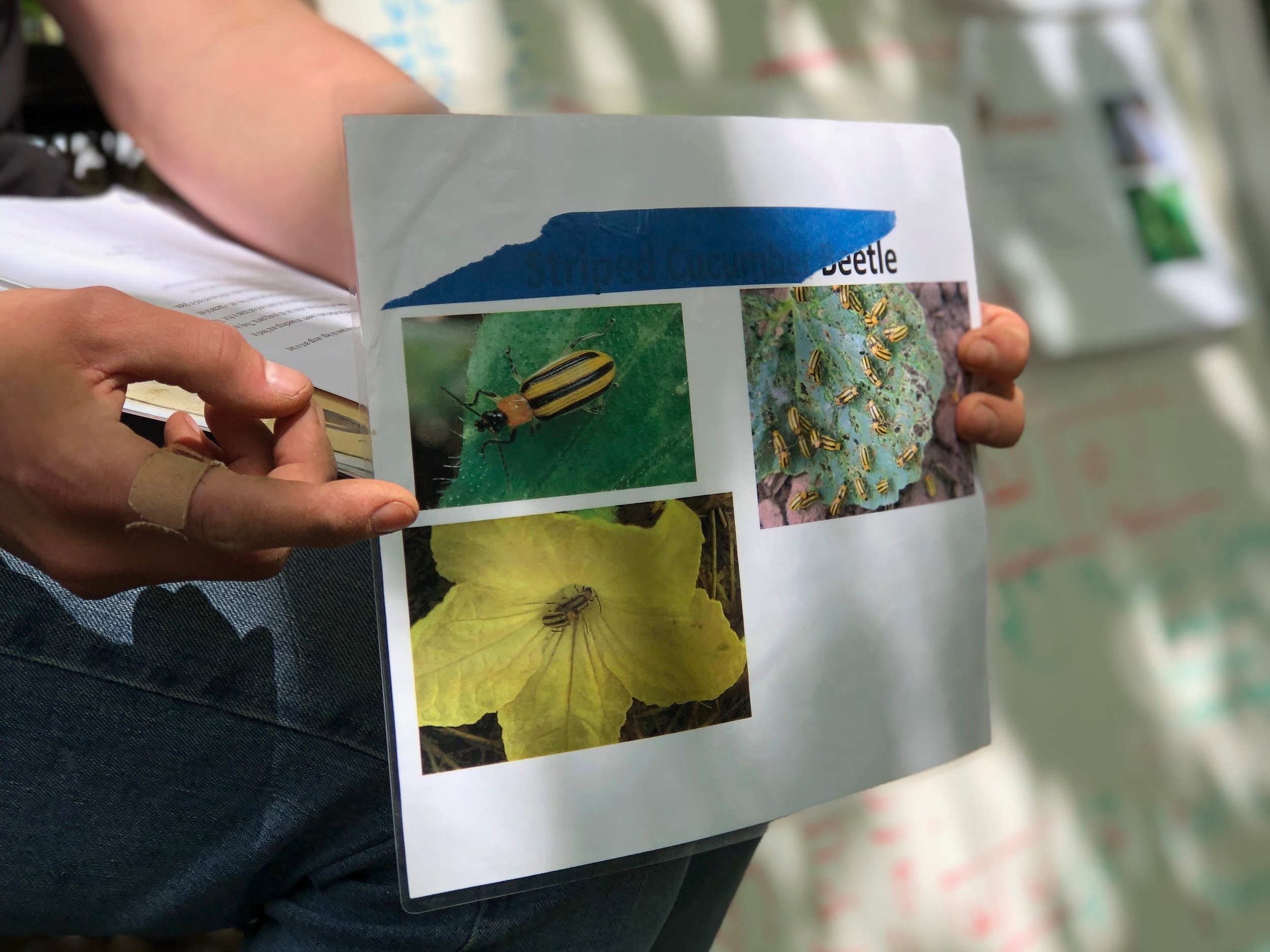
2) Prevent
Now that you’ve identified and understand the behavior of the pest, you can prevent! Being prepared for pests and doing what you can to discourage them can save your plants from damage and lessens the need for other controls later on.
There are lots of approaches to both long and short-term prevention that you can apply to your garden. Click through the photos below for some examples!
Long term prevention:
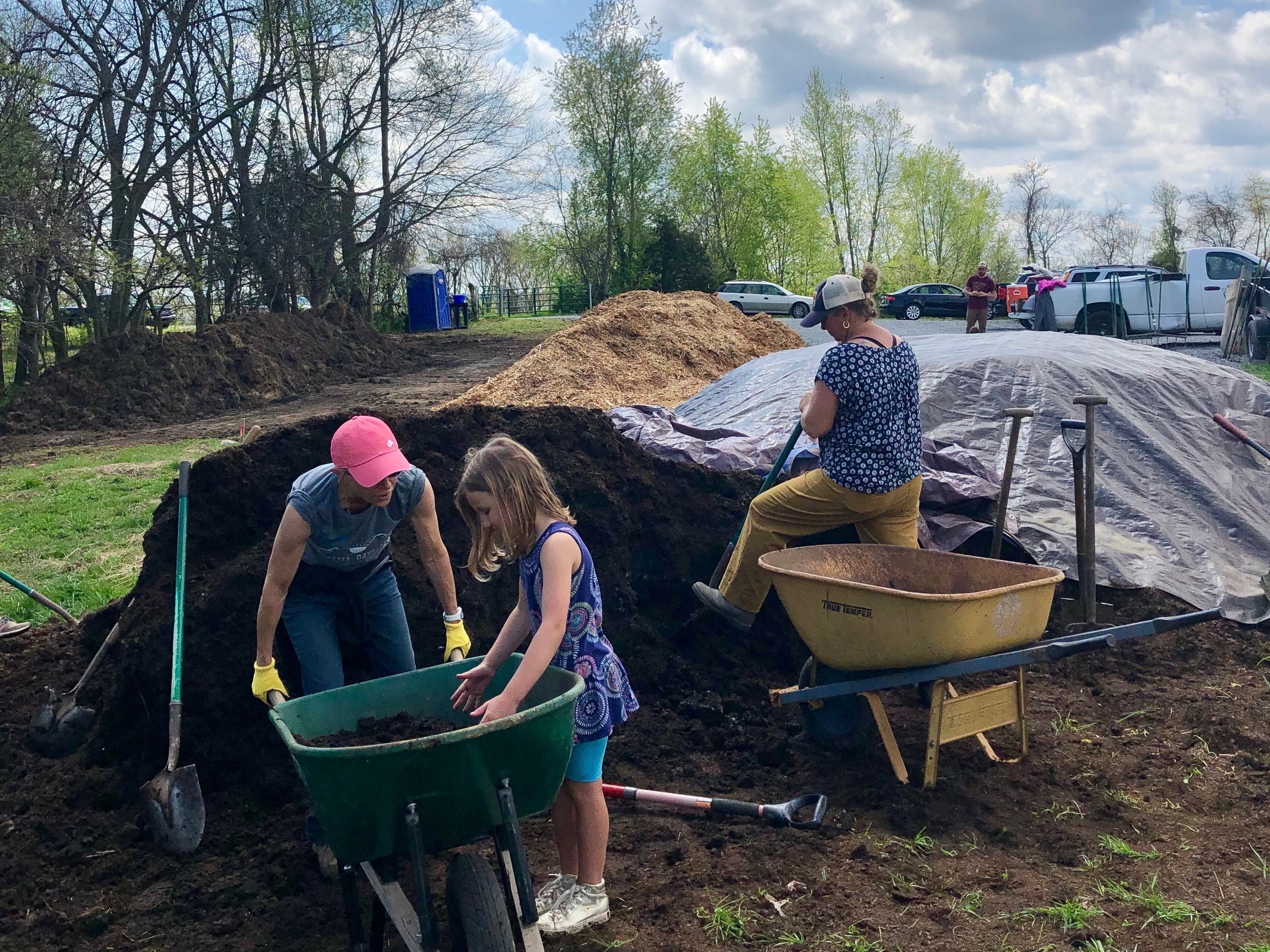
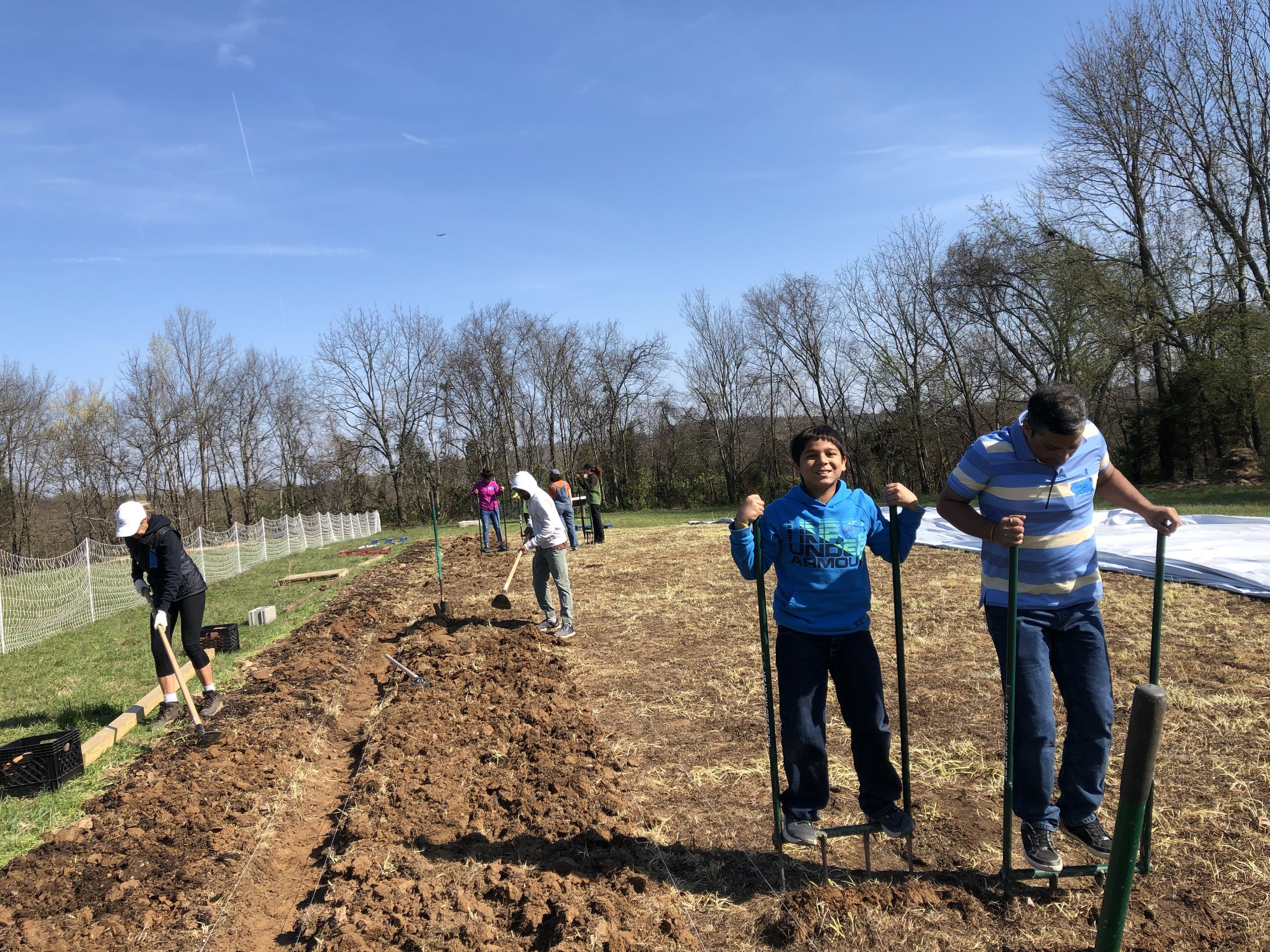
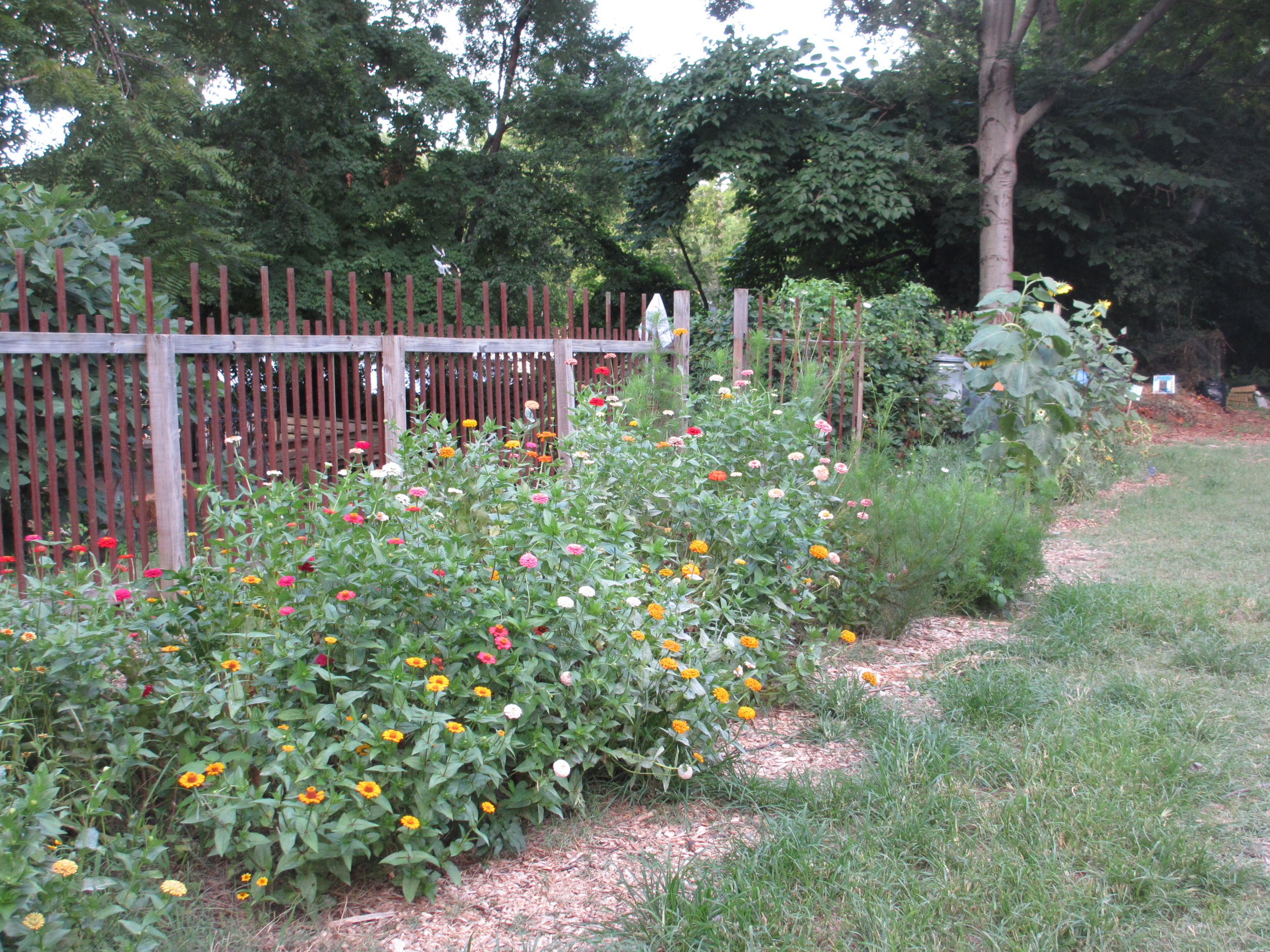
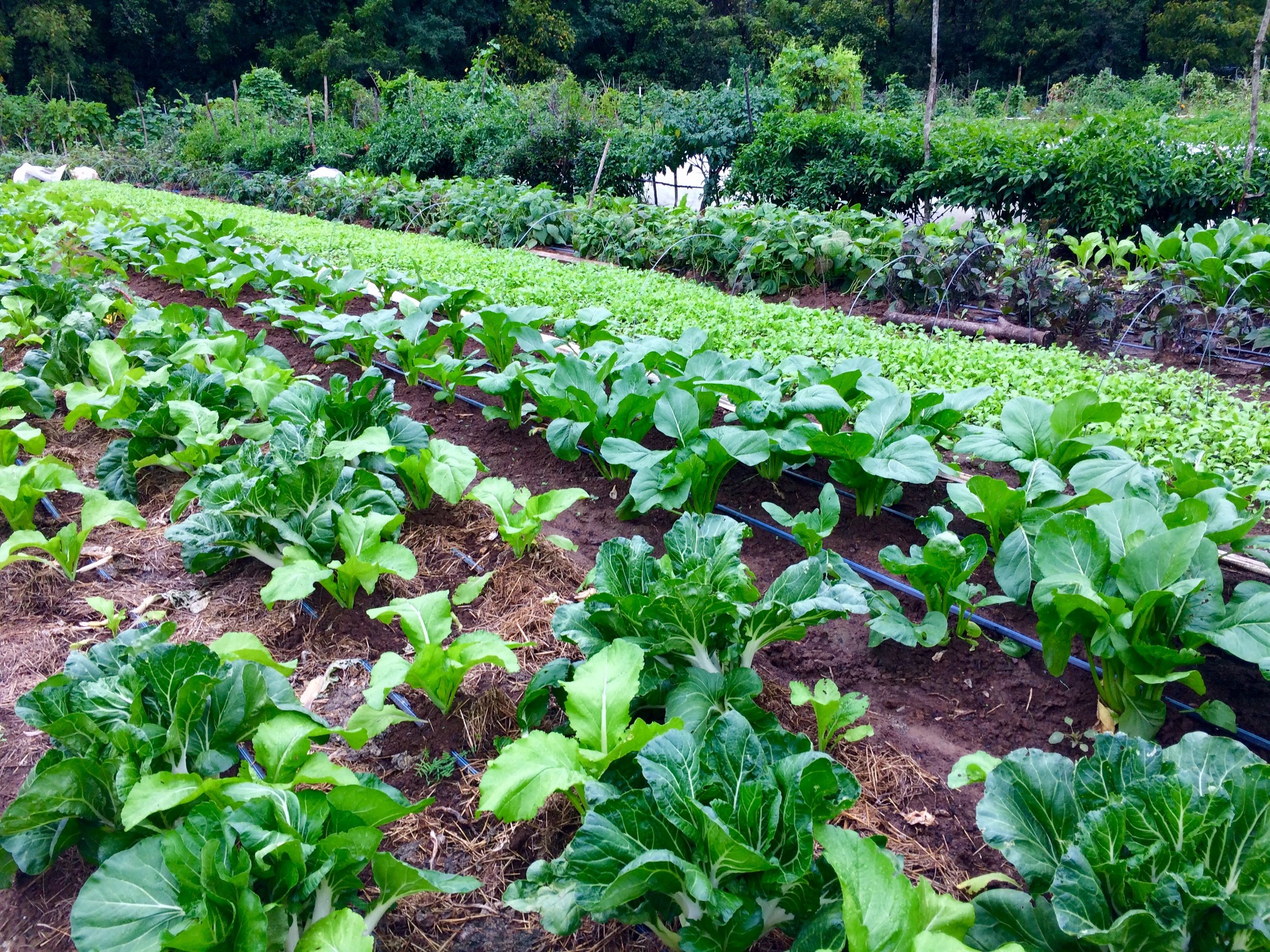
Short term prevention:
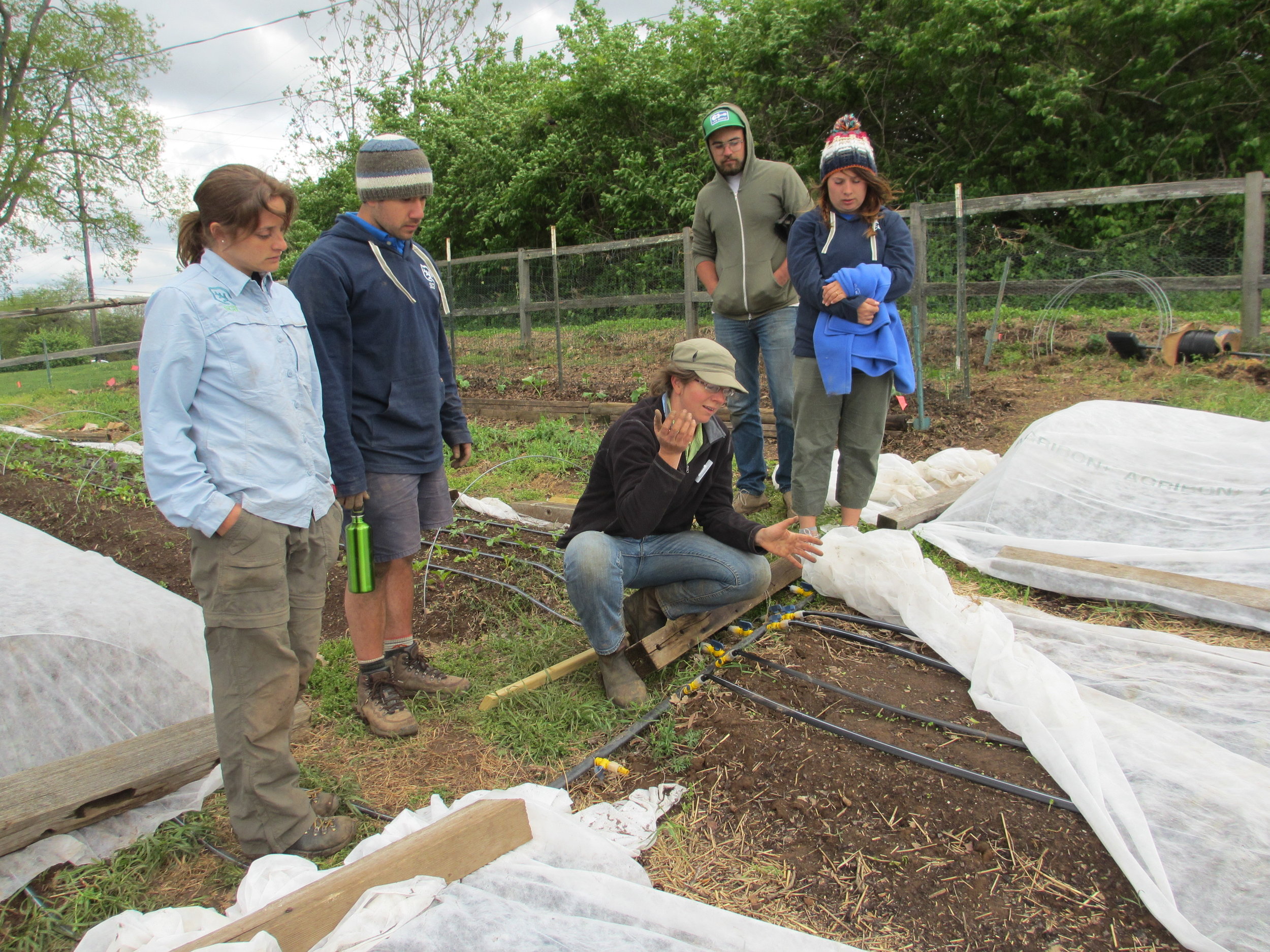
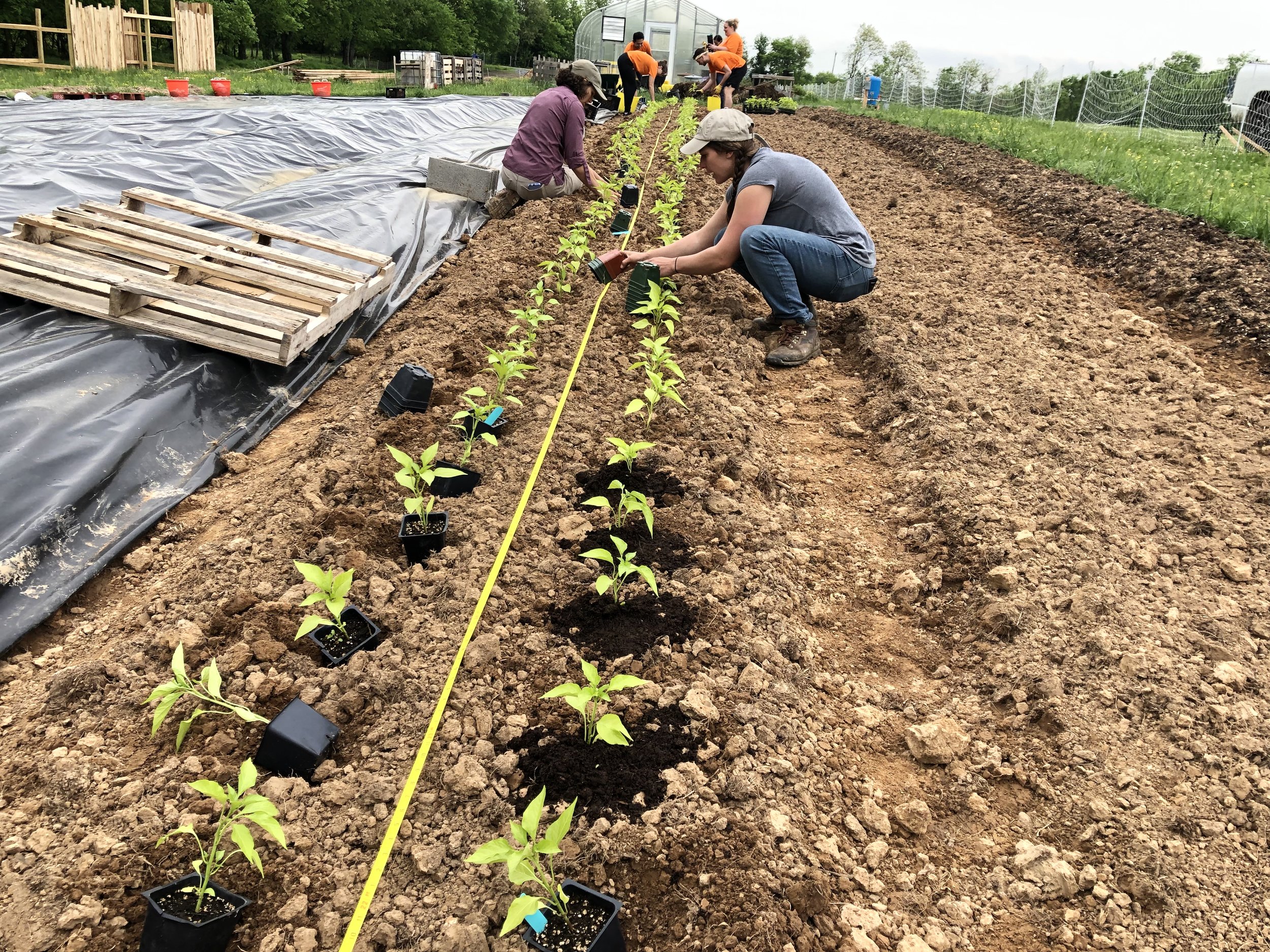
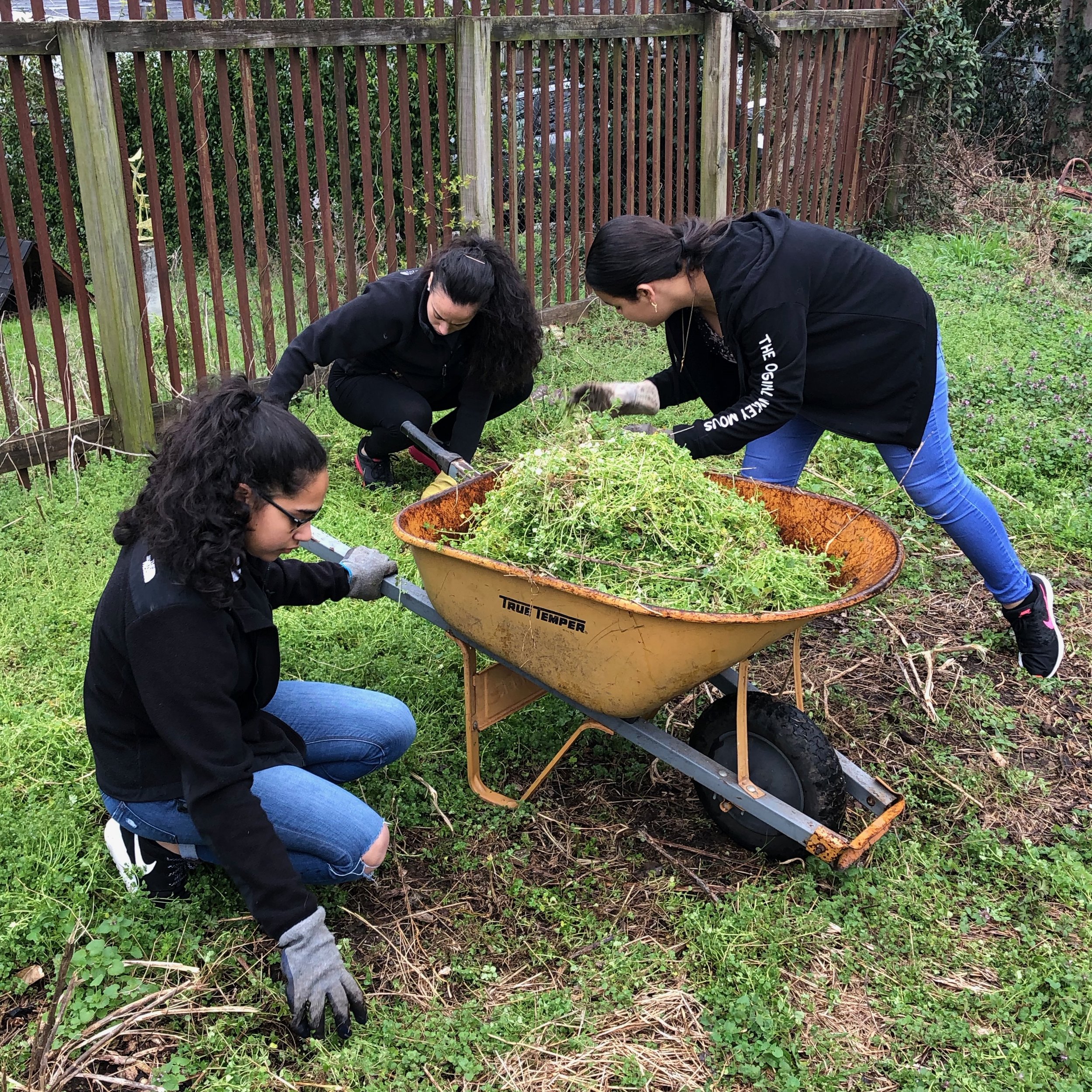

3) Physical control
Even after using these prevention methods, there’s a good chance you’ll still confront some pests in your garden, especially in a shared space. The next step in integrated pest management is physical control, such as knocking pests off of plants with a spray of water or using barriers and traps.
Here are some examples…
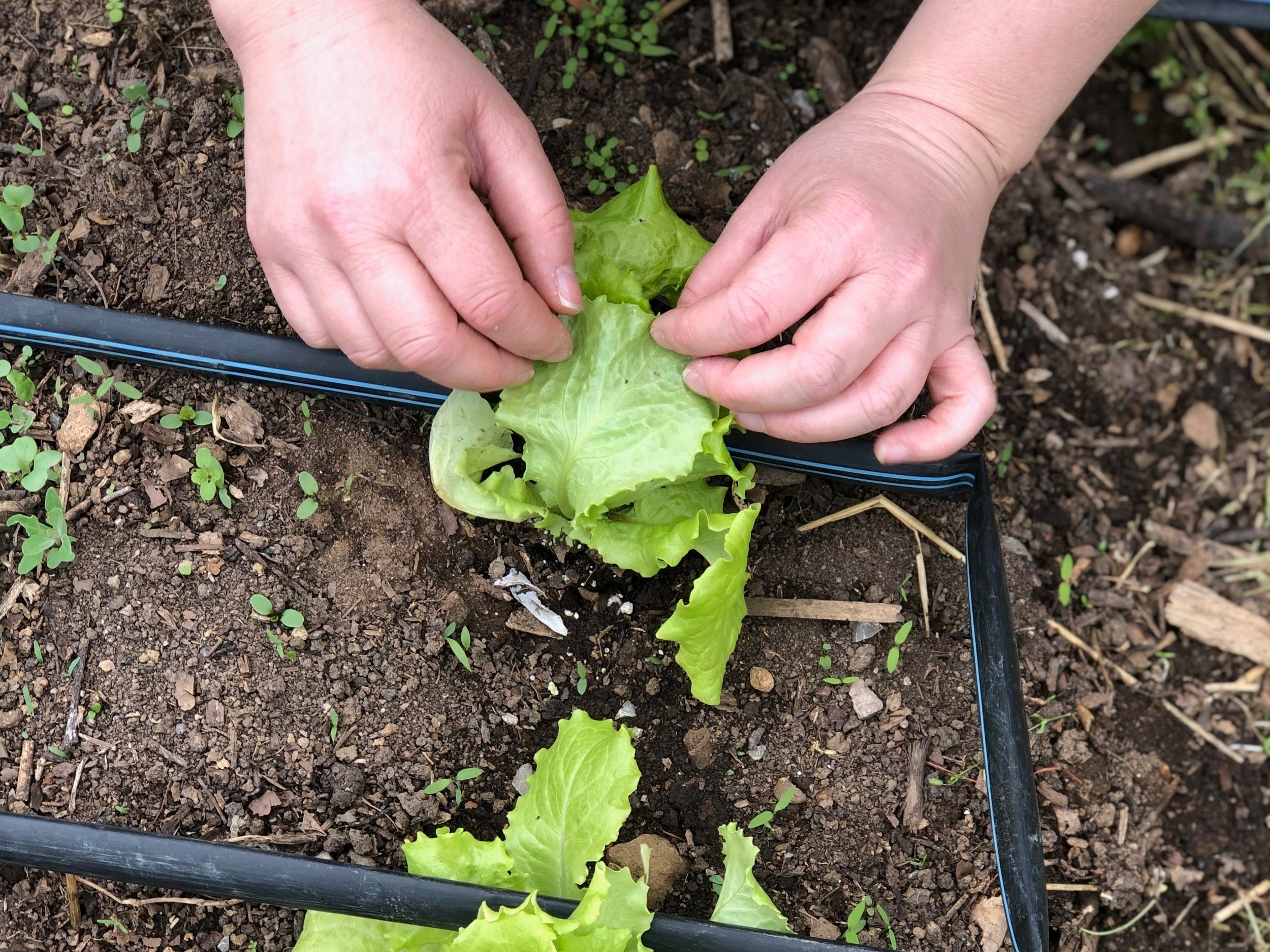
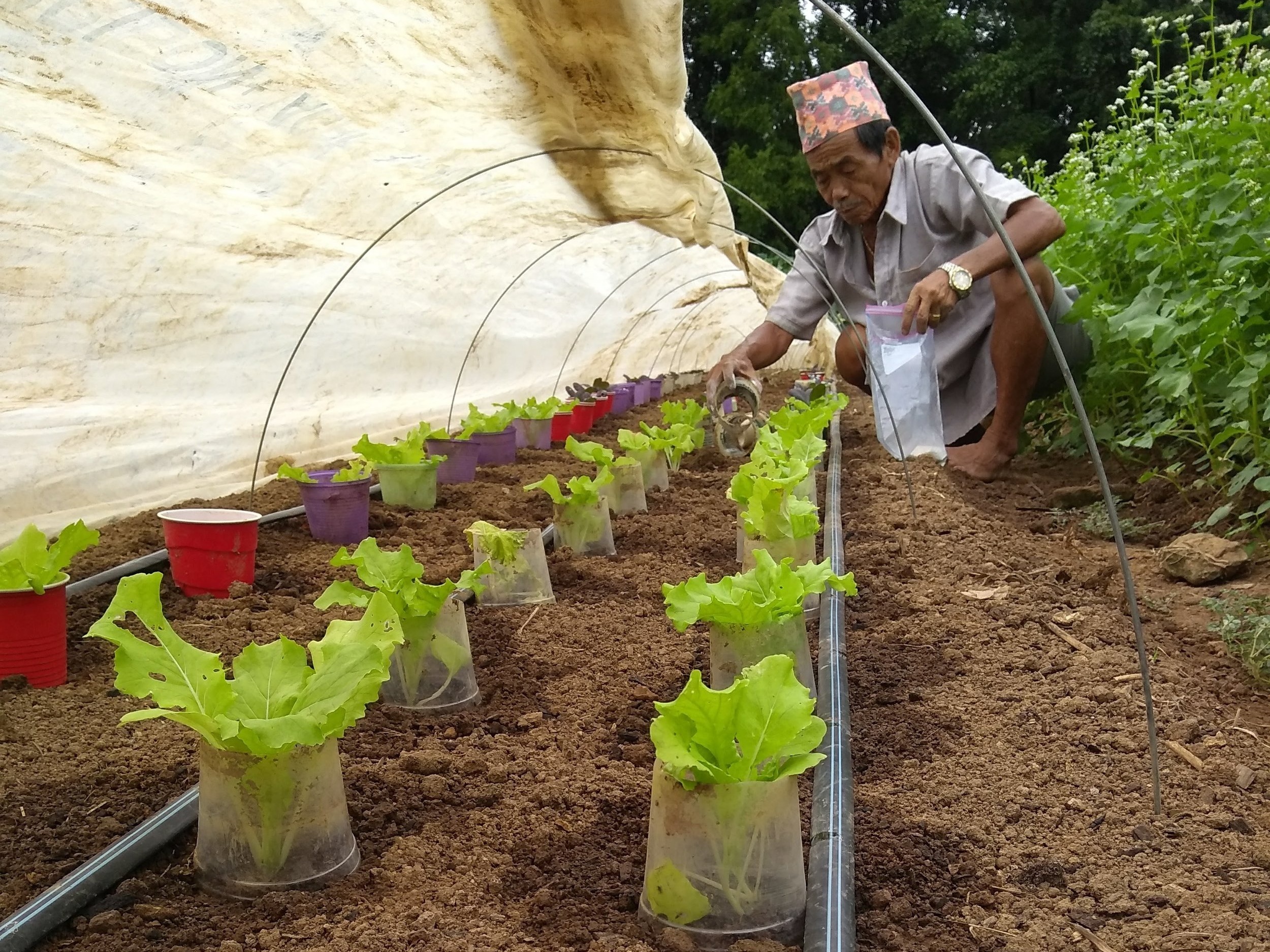
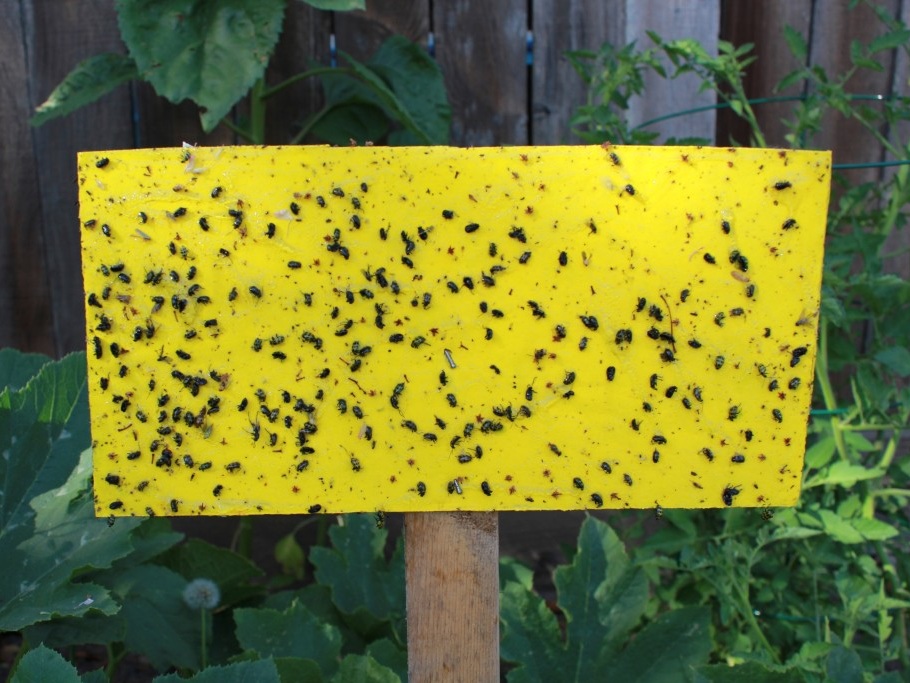
4) Organic chemical control
If all else fails, there are a number of organic chemical control options that are not particularly toxic except to insects. We use this as a last resort, since some of these approaches can also harm beneficial insects. Look for products that are approved by The Organic Materials Review Institute (OMRI) - a private, nonprofit organization that determines whether or not a product qualifies as organic under the USDA's National Organic Program. Food grade versions of Diatomaceous earth, Safer Soap and Neem Oil are a few examples.
We often say the trainings at our community gardens are more of a knowledge exchange… many of the gardeners bring a wealth of different experiences, and we’re always learning more together!
If you’re interested in reading more about natural pest control, The Organic Gardener’s Handbook of Natural Pest and Disease Control is a great resource that you can find at the Nashville Public Library. We also love The Timber Press Guide to Vegetable Gardening in the Southeast as a general guide to gardening in Tennessee.
What pest control approaches have worked for you in your garden? Let us know in the comments!



